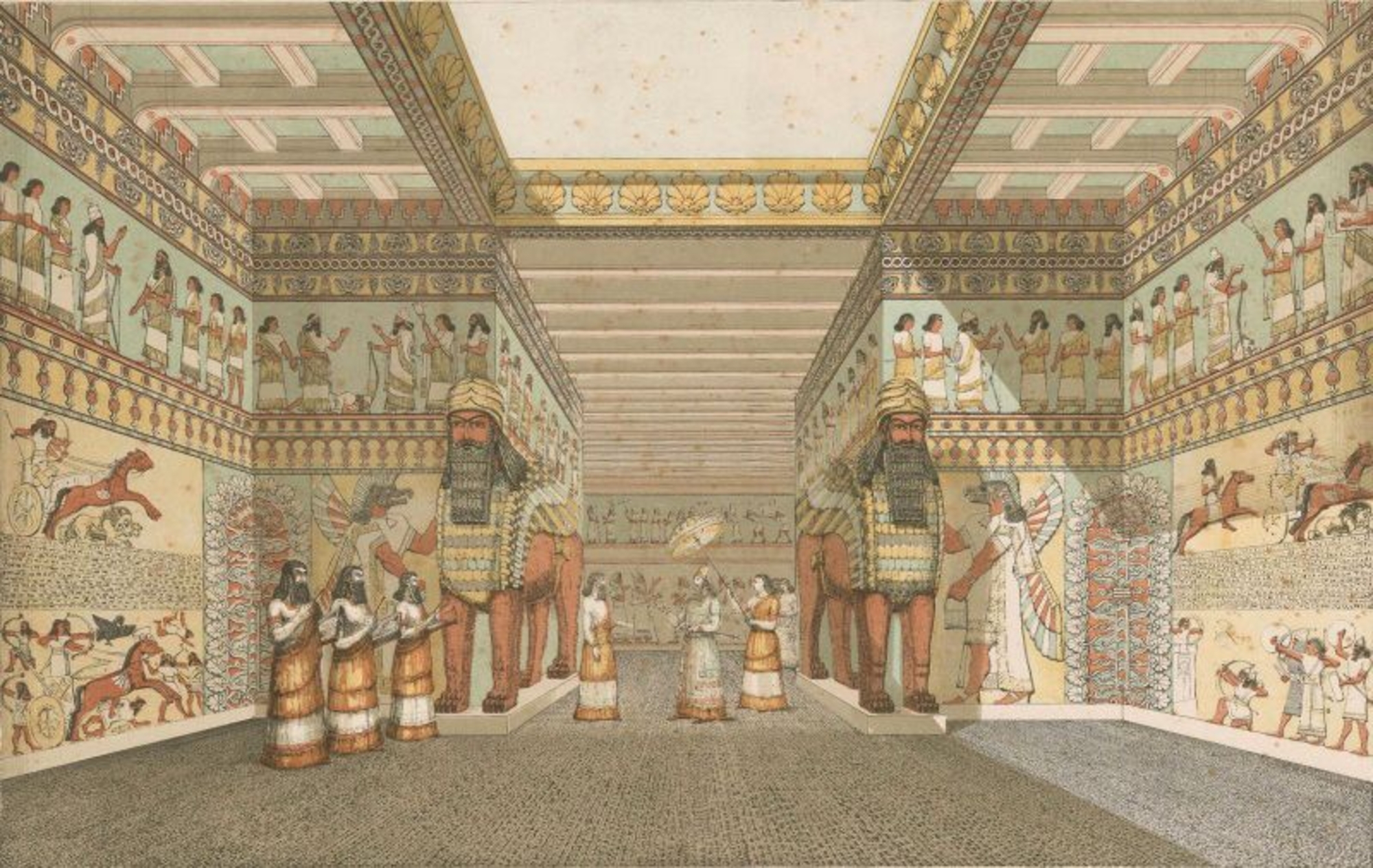
- Home
- The luxury of an Assyrian palace
- Narrative reliefs
- Medes tributaries
This relief was displayed in Corridor X connecting the Throneroom courtyard of the palace to Courtyard III. The passage was decorated with reliefs carved in two registers separated by an inscribed band. They depict scenes of tributaries - the subject peoples of Assyria who came bearing gifts for the king.
A scene of submission
The characterisation of people by the style of their hair and clothing is a constant feature of Assyrian art and makes them easier to identify. The five figures depicted here are Medes, recognisable by their large laced boots and spotted animal skins or woolly fleeces. Unlike Assyrians, they have short curly hair and slim headbands, and most of them wear cropped beards. Two men are holding a model of a fortified city in their hands as a sign of allegiance to Sargon. The raised right fist is a mark of greeting and respect.
Importance of horses
Two of the men are leading horses. The Medes are offering this tribute to the Assyrian king. A horse-breeding people, the Medes settled in Iran around the 7th century BCE. Richly harnessed with reins decorated with floral motifs and pompoms, and with carefully braided tails, the horses were a typical gift from their country. Horses first began to play an important role in the 1st millennium BCE, leading to improvements in riding equipment, such as horse bits. Assyrians used large numbers of war horses for cavalry service or to pull chariots.



